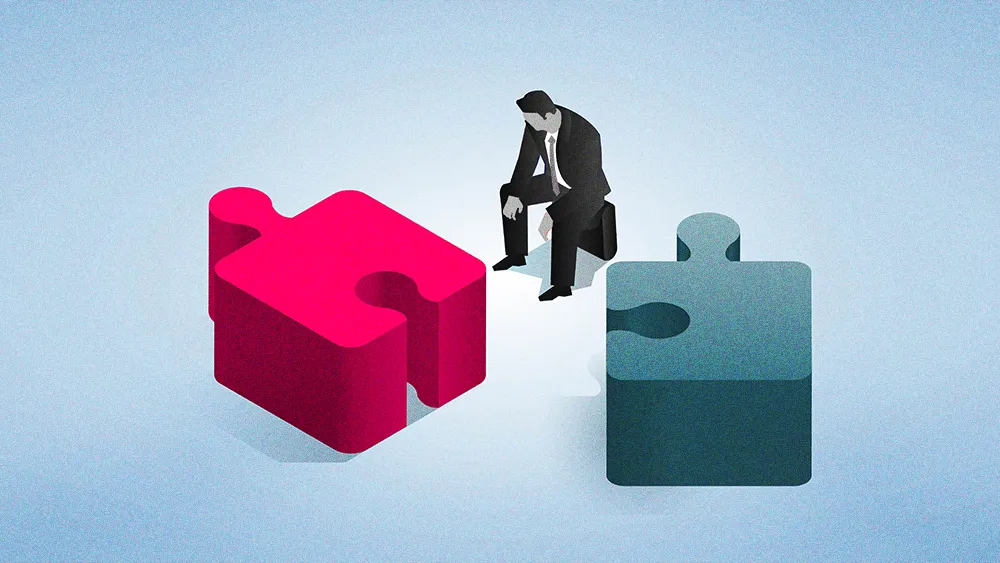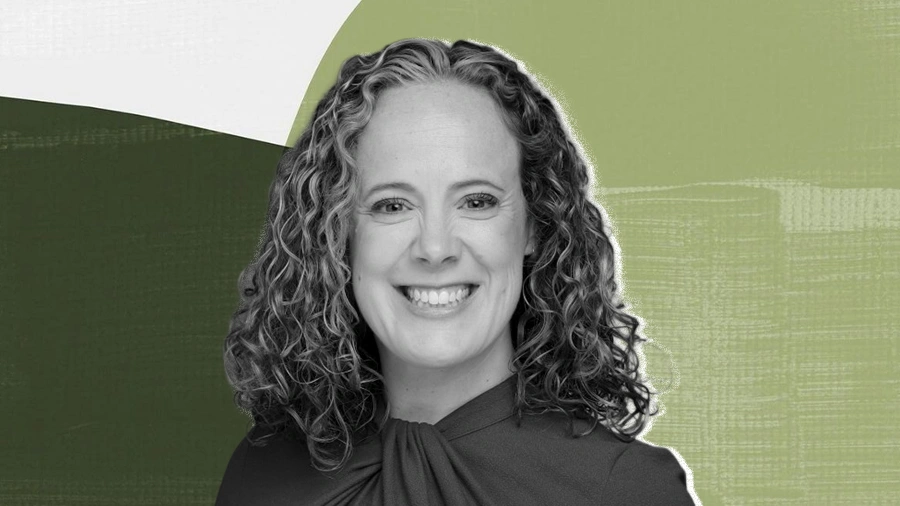Corporate Culture Evolves as Organizations Balance Global Vision with Local Voice

Key Points
Many global organizations weaken their culture by enforcing uniformity that overlooks local strengths.
Pete Marcell, VP of Learning and Organization Development at Ultra Clean Technology, explains that true unity comes from shared principles and local flexibility.
His approach gives leaders a common toolbox, encourages open listening, and treats culture as a living system that must constantly adapt and be maintained.
It's really cultures within a culture. We're trying to drive the vision of a unified org, but you have to recognize that what works in Shanghai, which is a very hierarchical and top-down approach, isn't going to fly in Austin, Texas. As leaders, you have to allow that flexibility to find what works for each location.

Pete Marcell
VP of Learning and Organization Development
Ultra Clean Technology
How do you build a unified corporate identity without crushing the local cultures that make each individual site unique? Too often, global organizations chase sameness, believing one model can fit every team. But that approach backfires, stripping away the local strengths that make each site successful. A better path starts with shared principles and gives leaders the freedom to adapt to local realities while still moving together under one collective identity.
It’s a tension that Pete Marcell, VP of Learning and Organization Development at semiconductor subsystem manufacturer Ultra Clean Technology, knows well. His career has been spent building unified systems for diverse populations, from implementing a global learning platform for thousands of users to managing talent development at Samsung Semiconductor. For Marcell, succeeding globally means letting go of the idea of a single, uniform culture and learning instead to empower local differences while building a cohesive whole.
“It’s really cultures within a culture. We’re trying to drive the vision of a unified org, but you have to recognize that what works in Shanghai, which is a very hierarchical and top-down approach, isn’t going to fly in Austin, Texas. There, you have to state the purpose, address what’s in it for the individual, and explain how it helps the team, as opposed to simply issuing a directive to get it done. As leaders, you have to allow that flexibility to find what works for each location,” says Marcell.
The leader’s launchpad: Marcell equips leaders with a shared foundation that connects consistency with adaptability, ensuring everyone speaks the same leadership language while leaving room for local nuance. “We want our leaders to have a baseline because it gives them the ability to flex and move across a spectrum to figure out what works for them. When you begin to put those components together, things like our Leadership Task Cycle and the SBI model for communication, it becomes a toolbox that a person can draw from for a given situation,” he explains.
Putting this philosophy into practice, Marcell says, means having your “antennas out.” It’s a way of listening that blends formal data with informal observation to constantly gauge the pulse of the organization, from company-wide surveys down to one-on-one interactions.
Antennas up: “We use employee and key talent surveys to get an inside track on what is working and what isn’t. But a lot of it you can also do anecdotally, just by walking around. It’s the classic advice to get out from behind your desk, walk around, and talk to your people. As a leader, you can gauge where people are at just from their attitudes and behaviors,” Marcell says.
Read the room: He describes a recent project kickoff with 30 people from across global functions, a brand-new initiative where the details are still unfolding. “My role was to keep my mouth shut, listen, and read the room before weighing in,” Marcell says. “When you don’t yet have the framework, it’s better to focus on how people are engaging and what the energy in the room is telling you. That awareness gives you the context you need to lead effectively.”
Different strokes: “How you interact with one person may be completely different from how you interact with another,” he continues. “With one team member, I can be very direct. With another, it might take several conversations for them to get the full context. It’s not that either style is right or wrong, but about how I have to adapt to help those people find success.”
But a tool Marcell considers uniquely powerful is one many leaders are hesitant to use: admitting fault. In his view, building a resilient team depends on creating a culture where it is safe to fail.
Permission to fail: “You have to understand that sometimes you’re going to mess up. And if you mess up, it’s okay, but just own it in front of your team and say, ‘Hey, you know what? I made a mistake. What do you guys think I should have done differently?'” That ownership, Marcell believes, sends a powerful message: it’s a safe place for everyone to fail, as long as you learn from it and move forward. That’s how you build trust.
Routine maintenance: Marcell sees cultural maintenance as a continuous practice that demands constant energy, a need amplified now that so much work is done remotely and connection can no longer be taken for granted. “It takes time to build that relationship, and like anything, you have to maintain it,” he says. “You have to keep putting energy into it. It’s not a milestone you reach and move on from. As a leader, you can’t step back once things are going well. It’s like a marriage, you have to keep working at it to make it succeed.”
At the end of the day, he sees culture as a living structure: unified in design but always adapting to its surroundings. Every part influences the rest, and the strength of the whole depends on how each local culture moves within it. “When I think about the overarching culture, I picture a geodesic dome where everything is connected. If you tug on one part, another part shifts. It’s always adjusting, finding balance, and that flexibility is what keeps the entire structure strong,” Marcell concludes. “It’s very much a living, breathing entity.”
When I think about the overarching culture, I picture a geodesic dome where everything is connected. If you tug on one part, another part shifts. It’s always adjusting, finding balance, and that flexibility is what keeps the entire structure strong. It's very much a living, breathing entity.

Pete Marcell
VP of Learning and Organization Development
Ultra Clean Technology
When I think about the overarching culture, I picture a geodesic dome where everything is connected. If you tug on one part, another part shifts. It’s always adjusting, finding balance, and that flexibility is what keeps the entire structure strong. It's very much a living, breathing entity.

Pete Marcell
VP of Learning and Organization Development
Ultra Clean Technology
Related articles
TL;DR
Many global organizations weaken their culture by enforcing uniformity that overlooks local strengths.
Pete Marcell, VP of Learning and Organization Development at Ultra Clean Technology, explains that true unity comes from shared principles and local flexibility.
His approach gives leaders a common toolbox, encourages open listening, and treats culture as a living system that must constantly adapt and be maintained.

Pete Marcell
Ultra Clean Technology
VP of Learning and Organization Development

VP of Learning and Organization Development
How do you build a unified corporate identity without crushing the local cultures that make each individual site unique? Too often, global organizations chase sameness, believing one model can fit every team. But that approach backfires, stripping away the local strengths that make each site successful. A better path starts with shared principles and gives leaders the freedom to adapt to local realities while still moving together under one collective identity.
It’s a tension that Pete Marcell, VP of Learning and Organization Development at semiconductor subsystem manufacturer Ultra Clean Technology, knows well. His career has been spent building unified systems for diverse populations, from implementing a global learning platform for thousands of users to managing talent development at Samsung Semiconductor. For Marcell, succeeding globally means letting go of the idea of a single, uniform culture and learning instead to empower local differences while building a cohesive whole.
“It’s really cultures within a culture. We’re trying to drive the vision of a unified org, but you have to recognize that what works in Shanghai, which is a very hierarchical and top-down approach, isn’t going to fly in Austin, Texas. There, you have to state the purpose, address what’s in it for the individual, and explain how it helps the team, as opposed to simply issuing a directive to get it done. As leaders, you have to allow that flexibility to find what works for each location,” says Marcell.
The leader’s launchpad: Marcell equips leaders with a shared foundation that connects consistency with adaptability, ensuring everyone speaks the same leadership language while leaving room for local nuance. “We want our leaders to have a baseline because it gives them the ability to flex and move across a spectrum to figure out what works for them. When you begin to put those components together, things like our Leadership Task Cycle and the SBI model for communication, it becomes a toolbox that a person can draw from for a given situation,” he explains.
Putting this philosophy into practice, Marcell says, means having your “antennas out.” It’s a way of listening that blends formal data with informal observation to constantly gauge the pulse of the organization, from company-wide surveys down to one-on-one interactions.
Antennas up: “We use employee and key talent surveys to get an inside track on what is working and what isn’t. But a lot of it you can also do anecdotally, just by walking around. It’s the classic advice to get out from behind your desk, walk around, and talk to your people. As a leader, you can gauge where people are at just from their attitudes and behaviors,” Marcell says.
Read the room: He describes a recent project kickoff with 30 people from across global functions, a brand-new initiative where the details are still unfolding. “My role was to keep my mouth shut, listen, and read the room before weighing in,” Marcell says. “When you don’t yet have the framework, it’s better to focus on how people are engaging and what the energy in the room is telling you. That awareness gives you the context you need to lead effectively.”
Different strokes: “How you interact with one person may be completely different from how you interact with another,” he continues. “With one team member, I can be very direct. With another, it might take several conversations for them to get the full context. It’s not that either style is right or wrong, but about how I have to adapt to help those people find success.”

Pete Marcell
Ultra Clean Technology
VP of Learning and Organization Development

VP of Learning and Organization Development
But a tool Marcell considers uniquely powerful is one many leaders are hesitant to use: admitting fault. In his view, building a resilient team depends on creating a culture where it is safe to fail.
Permission to fail: “You have to understand that sometimes you’re going to mess up. And if you mess up, it’s okay, but just own it in front of your team and say, ‘Hey, you know what? I made a mistake. What do you guys think I should have done differently?'” That ownership, Marcell believes, sends a powerful message: it’s a safe place for everyone to fail, as long as you learn from it and move forward. That’s how you build trust.
Routine maintenance: Marcell sees cultural maintenance as a continuous practice that demands constant energy, a need amplified now that so much work is done remotely and connection can no longer be taken for granted. “It takes time to build that relationship, and like anything, you have to maintain it,” he says. “You have to keep putting energy into it. It’s not a milestone you reach and move on from. As a leader, you can’t step back once things are going well. It’s like a marriage, you have to keep working at it to make it succeed.”
At the end of the day, he sees culture as a living structure: unified in design but always adapting to its surroundings. Every part influences the rest, and the strength of the whole depends on how each local culture moves within it. “When I think about the overarching culture, I picture a geodesic dome where everything is connected. If you tug on one part, another part shifts. It’s always adjusting, finding balance, and that flexibility is what keeps the entire structure strong,” Marcell concludes. “It’s very much a living, breathing entity.”




